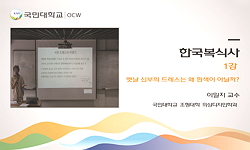This paper introduces the tradition of pastoral nomadism in the Mongolian plateau which began during the Mesolithic period (15,000∼ 7,000 years ago), and which still has influence on the behavior, life style, emotions, and social structure of the Mo...
http://chineseinput.net/에서 pinyin(병음)방식으로 중국어를 변환할 수 있습니다.
변환된 중국어를 복사하여 사용하시면 됩니다.
- 中文 을 입력하시려면 zhongwen을 입력하시고 space를누르시면됩니다.
- 北京 을 입력하시려면 beijing을 입력하시고 space를 누르시면 됩니다.

몽골 고원의 유목 전통과 현실 -유목민, 가축, 목영지를 중심으로- = The Tradition and Present Situation of Pastoral Nomadism in the Mongolian Plateau -With special reference to nomads, their Livestock, and pasture Land-
한글로보기https://www.riss.kr/link?id=A60203194
- 저자
- 발행기관
- 학술지명
- 권호사항
-
발행연도
2012
-
작성언어
-
- 주제어
-
KDC
000
-
등재정보
KCI등재
-
자료형태
학술저널
-
수록면
349-380(32쪽)
- 제공처
- 소장기관
-
0
상세조회 -
0
다운로드
부가정보
다국어 초록 (Multilingual Abstract)
This paper introduces the tradition of pastoral nomadism in the Mongolian plateau which began during the Mesolithic period (15,000∼ 7,000 years ago), and which still has influence on the behavior, life style, emotions, and social structure of the Mongols. For this aim, Section 1 (Tradition of pastoral nomadism in Mongolian plateau) tries to make readers understand that nomadism does not mean endless wanderings but rather seasonal movement within the nomad`s native land, nutag, basically four times a year. In Section 2 (Three major factors of pastoral nomadism in the Mongolian plateau), three basic factors of Mongolian nomadism are discussed: nomads, five sorts of livestock, and the pasture land. As for the nomads, their knowledge, experience, attachment, and concerns regarding their livestock and pasture land are described together with their felt tent home and basic organization of nomadic life, that is ger and hotail. As for the five sorts of livestock (sheep, goat, horse, cattle, camel), the number for each type are cited from recent government statistics, and the variability and vulnerability of the animals are explained. The meaning or physical-emotional span of nutag, the native land of the nomads, is also described in Section 2. Section 3 (Situation of pastoral nomadism: threats to pastoral noma- dism) examines the present situation of pastoral nomadism in the Mon- golian plateau, more specifically the major threats to nomadism itself and to nomadic society. The division of the area by Russia, Mongolia, and China, and the migration of Russian and Chinese populations into the plateau is mentioned as the political situation which caused the major unfavorable changes to nomadism. Social-economic aggravation towards nomadism is pointed out as the unfavorable factor which forces the nomads to degenerate into the urban poor. Environmental destruction including the desertification of pasture land is introduced together with the opinions of the Mongolian experts who blame human greed and negligence. In Section 4 (Summary: Conclusion, prospect), the above discussion is summarized into 10 points to assist scholars who are not Mongol specialists, and a rather brief and pessimistic prospect is presented for the future of Mongolian pastoral nomadism.
동일학술지(권/호) 다른 논문
-
- 서울대학교 인문학연구원
- 김수중
- 2012
- KCI등재
-
- 서울대학교 인문학연구원
- 차승기
- 2012
- KCI등재
-
- 서울대학교 인문학연구원
- 주경미 ( Kyeong Mi Joo )
- 2012
- KCI등재
-
- 서울대학교 인문학연구원
- 이필원 ( Pil Won Lee )
- 2012
- KCI등재




 KISS
KISS





